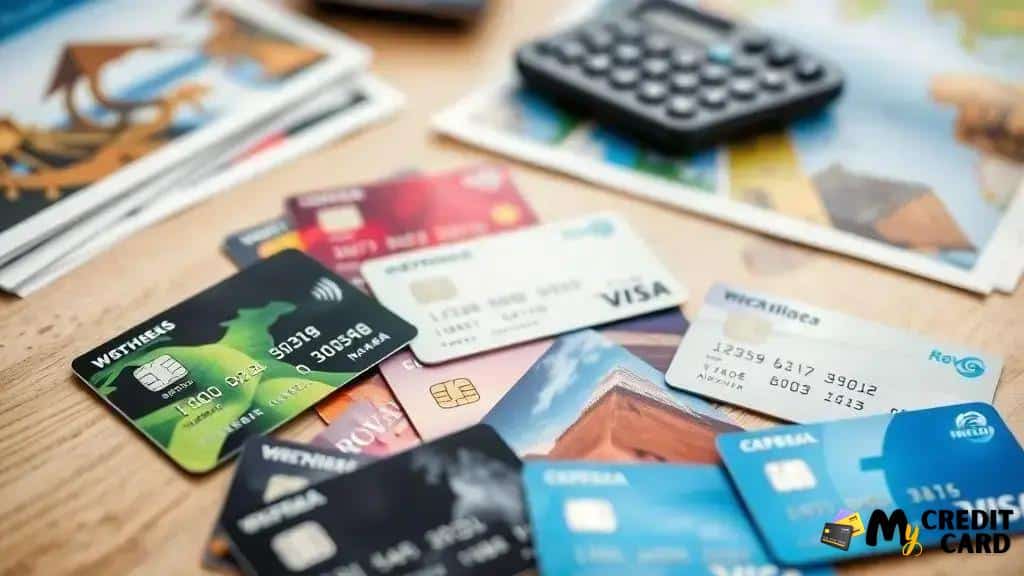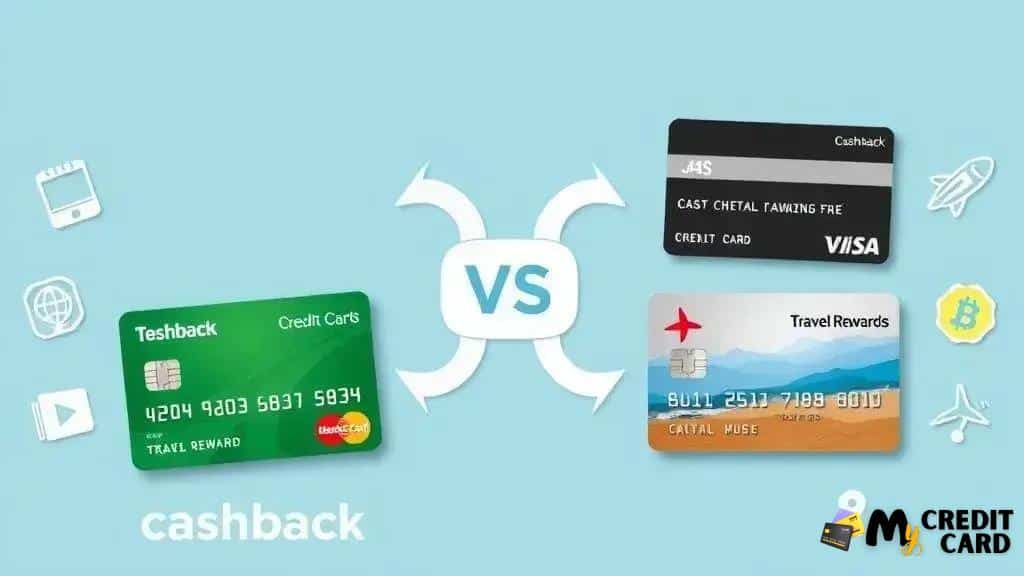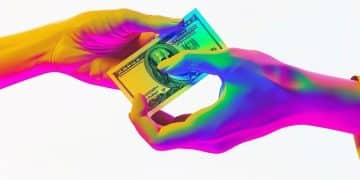Best cashback cards vs travel cards now: What’s the right choice?

Anúncios
The best cashback cards provide a percentage back on purchases, while travel cards earn points or miles for travel-related expenses, allowing users to maximize their rewards based on lifestyle and spending habits.
Best cashback cards vs travel cards now is a debate many consumers face.
Are you maximizing your rewards while saving money? Let’s explore how these cards can impact your lifestyle.
Anúncios
Understanding cashback cards
Understanding cashback cards is essential for anyone looking to maximize their credit card rewards.
These cards allow you to earn a percentage of what you spend back as cash.
This guide will help you grasp the benefits and mechanisms behind these popular financial tools.
Anúncios
What are cashback cards?
Cashback cards are credit cards that reward you with a percentage of your purchases.
You can receive this return as a statement credit, a check, or a direct deposit to your bank account.
Choosing the right card can boost your savings significantly.
Benefits of using cashback cards
One of the main advantages of cashback cards is their simplicity.
Unlike points systems, where redeeming rewards can be complex, cashback works straightforwardly. Here are some benefits:
- Immediate returns on everyday purchases.
- No restrictions on redemption.
- Flexible spending options.
Often, cashback cards also come with promotional bonuses, such as earnings for signing up or for meeting spending thresholds in the first few months.
It’s crucial to understand the terms to take full advantage of these offers.
How do cashback rates work?
The reward rate of cashback cards usually varies based on the category of spending.
For instance, you might earn 1.5% cashback across all categories, but up to 5% on specific purchases.
Being aware of these categories plays a critical role in maximizing your rewards.
Some cards also provide tiered rewards, where different spending levels yield varying cashback rates.
It’s important to track your spending habits to find a card that aligns with your priorities effectively.
Overall, understanding cashback cards helps you make informed choices. By selecting the right card and utilizing its benefits, you can enhance your financial savings.
Exploring travel rewards cards
Exploring travel rewards cards can open up exciting opportunities for frequent travelers.
These cards allow you to earn points or miles for the money you spend, which can be redeemed for flights, hotels, and other travel-related expenses.
Understanding how they work is essential to making the most of your travel experiences.
What are travel rewards cards?
Travel rewards cards are specially designed credit cards that provide users with points or miles based on their purchases.
These rewards can then be used for various travel perks.
Often, they come with additional benefits such as travel insurance, airport lounge access, and no foreign transaction fees, making overseas trips more enjoyable and cost-effective.
Benefits of travel rewards cards
Using travel rewards cards has many benefits, particularly for those who travel often. Some of the key advantages include:
- Opportunity to earn free flights and hotel stays.
- Exclusive promotional offers and bonuses.
- Enhanced travel experiences with upgrades and benefits.
These cards also make it easier to track your travel expenses and rewards, allowing you to plan future trips more effectively.
Frequent travelers can maximize their benefits by choosing cards that align with their travel habits, such as airlines or hotel chains they prefer.
How to choose the right travel rewards card
When selecting a travel rewards card, it is important to consider several factors.
Look for a card that offers a rewarding point system, which is easy to understand.
Some cards have special categories where you earn more points, such as dining or airfare.
Also, note the annual fees associated with the card. Sometimes, high fees can be justified if the card offers substantial rewards and benefits that you will use.
Research different options to find a card that fits your travel lifestyle and can provide substantial rewards on your expenditures.
Overall, exploring travel rewards cards can lead to amazing travel experiences and save you money.
By understanding how to use these cards effectively, you can turn everyday purchases into incredible adventures.
Key differences between cashback and travel cards
Understanding the key differences between cashback and travel cards is vital for making the right choice based on your spending habits.
Both types of cards offer unique benefits that can enhance your financial strategy.

Rewards structure
The primary difference lies in how rewards are structured. Cashback cards provide a percentage back on your purchases, while travel cards earn points or miles.
With cashback, the reward is straightforward: spend $100 and get $1.50 back with a 1.5% card.
On the other hand, with travel cards, you might earn two points for every dollar spent on airlines, which could translate into free flights or hotel stays.
Redemption options
Another significant difference is redemption. Cashback rewards can be easily accessed, often as a statement credit or direct deposit.
Travel rewards may come with more restrictions, requiring you to book through specific channels or using points within certain categories.
- Cashback rewards are generally flexible.
- Travel points may offer higher value when redeemed for travel expenses.
- Some travel cards may offer discounts or bonuses for specific bookings.
Moreover, travel cards often include additional perks, such as travel insurance, concierge services, and no foreign transaction fees, making them more appealing for frequent travelers.
Annual fees
Annual fees also differ between these card types.
Many cashback cards have no or low annual fees, while some travel cards might charge higher fees due to their extensive rewards and benefits.
It’s essential to weigh the potential rewards against the cost of the card to determine its overall value. Lastly, the right card for you depends on your lifestyle.
If you frequently travel and can take advantage of travel rewards, a travel card might be best.
However, if you prefer simplicity and immediate rewards, a cashback card could be more beneficial.
Understanding these key differences helps you make an informed decision about which card meets your financial needs.
Factors to consider when choosing a card
When selecting a credit card, there are several important factors to consider to ensure you choose the best option for your financial needs.
Understanding these factors can help you make a well-informed decision that aligns with your spending habits and financial goals.
Card type
First, determine which type of card suits you better: cashback or travel.
If you frequently travel, travel cards may offer better rewards on expenses like flights and hotels.
Alternatively, if you prefer straightforward savings, cashback cards can provide immediate rewards on daily purchases.
Reward rates
Next, examine the reward rates offered by different cards. Some cards provide a higher percentage back on specific categories, such as groceries or dining.
Evaluate your spending patterns to choose a card that maximizes your rewards.
- Look for bonus categories that match your spending.
- Consider if the rewards suit your lifestyle and spending habits.
- Check if bonus rewards apply to initial spending.
Another consideration is the redemption process for rewards.
Ensure the card offers flexible options for redeeming points or cashback, making it easy for you to benefit from your usage.
Fees and interest rates
Be aware of any fees associated with the card, including annual fees, foreign transaction fees, and late payment fines.
Some cards may have higher fees but offer significantly greater rewards, so it is essential to weigh these costs against potential benefits.
Additionally, comparing interest rates can help you avoid high-interest payments, especially if you carry a balance.
Customer service and additional benefits also play a vital role in your choice.
Look for cards that provide excellent customer support and added perks, such as travel insurance, purchase protection, or extended warranties.
Taking the time to carefully evaluate these factors will lead you to the right card, ensuring you fully benefit from your spending while minimizing costs.
Maximizing benefits from your credit card
Maximizing benefits from your credit card is essential to ensure you’re getting the most out of your spending.
By strategically using your card, you can earn rewards and save money on purchases.
Understand your card’s benefits
First, familiarize yourself with the specific benefits your card offers.
Some credit cards provide perks like bonus rewards for particular spending categories, while others may offer discounts on travel, dining, or shopping.
Knowing these details can help you plan your expenses better.
Utilize rewards programs
Many cards have rewards programs that allow you to accumulate points or cash back. Here are some tips to maximize these rewards:
- Use your card for everyday purchases to earn rewards consistently.
- Take advantage of bonus categories that offer higher rewards rates.
- Monitor promotional offers that provide extra incentives for specific spending.
Additionally, some cards offer sign-up bonuses, so pay attention to these opportunities when considering new cards. They can provide a significant boost to your rewards.
Pay your balance in full
To truly maximize your credit card benefits, always try to pay your balance in full each month.
This practice not only helps you avoid interest charges but also keeps your credit score healthy.
A good credit score can lead to better offers and lower interest rates in the future.
Leverage additional perks
Aside from rewards, many cards come with added benefits. These can include travel insurance, purchase protection, or extended warranties.
Make sure to utilize these perks where applicable to get additional value from your credit card.
Furthermore, consider signing up for a rewards program with hotels or airlines linked to your card.
This can lead to even more benefits and savings when booking trips.
By effectively managing your credit card and taking full advantage of its features, you can significantly increase your savings and rewards, making your spending work harder for you.
FAQ – Frequently Asked Questions about Cashback and Travel Cards
What is the main difference between cashback and travel cards?
Cashback cards give you a percentage of your spending back as cash, while travel cards offer points or miles that can be redeemed for travel-related expenses.
How can I maximize the rewards from my credit card?
To maximize rewards, use your card for everyday purchases, pay your balance in full each month, and take advantage of any bonus categories or promotional offers.
Are there any fees associated with credit cards?
Yes, many credit cards have annual fees, foreign transaction fees, and late payment penalties. Always check the fee structure before choosing a card.
What perks should I look for in a credit card?
Look for perks like travel insurance, purchase protection, no foreign transaction fees, and rewards programs that align with your spending habits.





